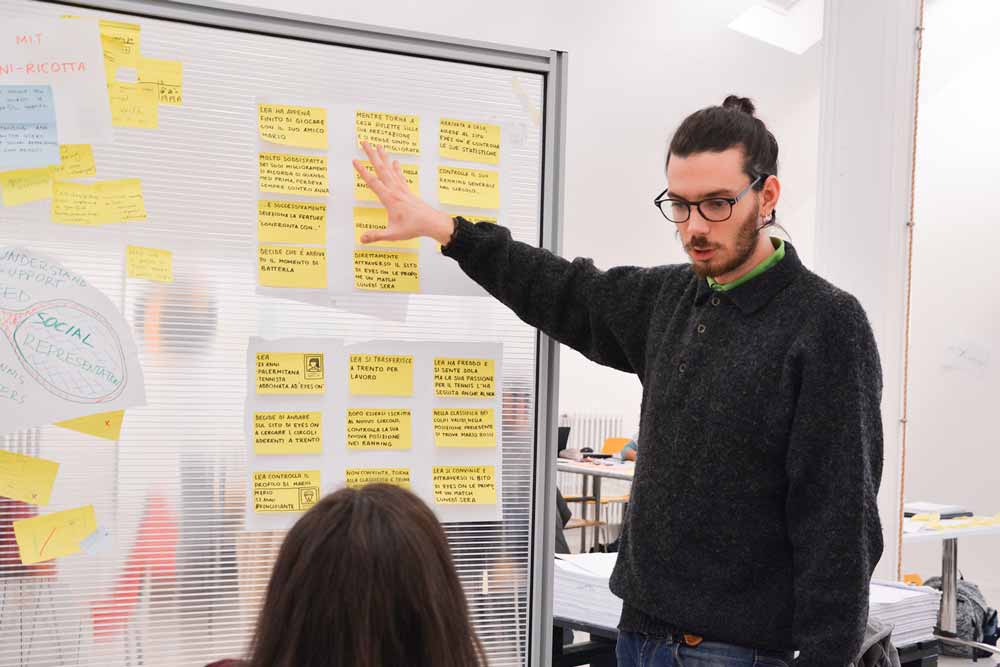The UX Challenge is a prize-driven initiative that can be run at a regional level by Innovation Agencies with the aim of SMEs awareness about the benefits of design thinking and user-centric design of digital products and services.
Description of the initiative
The UX Challenge awards the best solution to User Experience (UX) problems launched by a set of selected SMEs. Solutions are developed by teams of students and young design talents during a 2-day event pivoted on the Design Sprint methodology. Differently from traditional innovation prizes the UX Challenge allows delivering prototype solutions to a number of problem cases concurrently (products and companies), since activities of team of solvers are divided in parallel tracks – one per served companies).
The UX Challenge consists in the execution of an adapted (shorter) version of the Design Sprint. In particular, the adapted version of the Sprint differs from the original as follows:
- the duration: the standard Sprint lasts five days while the UX Challenge cover all the five phases of a Sprint within a 2-day time frame. SMEs (especially small companies) do not have much time to invest in innovative initiatives often because they do not have a proper R&D structure. Similarly, the 2-day time frame is enough to deliver demonstrative results yet impacting on SME awareness on benefits of the Sprint.
- the team mix: the standard Sprint is executed by members from the beneficiary company (many of which are normally chosen from the product development team) plus one or more facilitators from a design firm. Instead, within the UX Challenge the Sprint is executed “as-a-service” to companies by teams of university students and professionals (mentors) with a background in service design and HCI (human computer interaction). Anyway, the beneficiary company participates to all crucial steps of the Sprint. This way the execution of the Sprint has very small costs for the organizing innovation agency since students are strongly motivated by learning-in-practice and career development reasons, and professionals’ mentors are interested in showing their abilities to potential future customers.
Working model of the UX Challenge
Seekers
About eight SMEs from the ICT industry (software developers, app developers, integrators) as well as manufacturing companies. Products are selected, not companies – allowing companies to submit more than one product.
Output
Output of the Challenge are actionable design components and insights allowing companies to implement and industrialize an improved version of the selected product: interactive prototypes developed with specific software, interface mock-ups, videos from user testing, documents including guidelines for UX redesign. IPR policy is set in order for companies to fully exploit outputs of the Challenge: companies have the right to commercially exploit outputs.
Activities
The initiative consists in the execution of a compact Design Sprint on each of the selected products. The UX Challenge the Design Sprint is condensed into a 2-day process. Also, it is adapted in order to apply not only to strict design problems (aiming at developing and testing product prototypes starting from ideas and concepts), but also to re-design problems (applying to existing products).
Incentives and motivation
Teams’ results are evaluated by a jury that can involve all beneficiary companies, mentors, and external experts. The winning teams might expect prizes from the organisers.
Business model
Normally companies pay an access fee to take part to the UX CHallenge.
However, given the experimental approach of 200SMEchallenge, No access fees will be charged to the companies that will be selected to participate to the 2020 UX Challenge in the 7 targeted countries.
Governance
Each partner of the project leads both the planning and the execution of the UX Challenge, overall holding responsibility for the results and impact of the initiative. However, the UX Challenge is an initiative that normally leverages on the mutual collaboration of a variety of players of a regional innovation ecosystem (e.g. universities and tech transfer offices, industry representative associations) under the coordination of one Innovation Agency.
Input
Input to the Challenge are digital products (mobile apps, web apps, software) along with clear UX-related problems and/or innovation-related objectives (e.g. improving usability, designing new features, redesigning certain functionalities, etc.), hypotheses, or research questions. Products may come with very different degree of maturation: from products already on the market to product concepts.
Solvers
Solvers are university students (including Ph.D. students) and young design talents mainly with a background in interaction design-related studies (computer scientists, designers, sociologists, psychologists, economists). Solvers are organized in teams, and each team is mentored by at least one senior mentor (a UX design professional). Team formation is normally driven by the organizers.
Duration
Front-end execution of the UX Challenge endures 2-day plus a half-day of training for solvers upfront. To organize the UX Challenge requires at leat 4 months of preparation.
Resources
The Sprint involves a “testing” phase which requires the involvement of real end users, that have to be outreached and selected by the organizer. The test consists of 45-60 min task-based interview aiming at evaluating the desiderability and viability of the designed UX solutions.
Usere have to be selected depending on the selected product: this is a very demanding task which should not be underestimated, especially if the organizer has no experience in involving users in innovation processes.
Legal framework
The outreach and selection of seekers (companies) and solvers (students) is managed via two separate public calls for selection published by the organizer. Each call includes full regulations of the initiative: the criteria and process for evaluation of companies applications are such as: (i) relevance of the challenge to the User Experience domain; (ii) learnability of the product; (iii) potential business impact of the Sprint application; (iv) clarity of the submitted challenge; (v) soundness of the motivations brought by the applying
company.


